Have you heard of the skyscraper technique for SEO? Chances are, you’ve seen this technique being promoted, but you’re not sure if it will work for you.
The great thing about skyscraping is that it can work for all kinds of businesses if you follow the correct process. Once you understand how the skyscraper technique works, you’ll see how it can help improve your backlink structure and increase the number of visitors to your website. Read on to find out how! ⬇️
What Is The Skyscraper Technique?
The foundations of skyscraping were laid out by Brian Dean from Backlinko. Over the years, other SEO experts have written about the skyscraper technique and how it works.
The skyscraper technique is an SEO tactic that uses research and link building through blogger outreach. The technique revolves around finding popular articles on the subject you want to write about, select one of those articles, and see how you can create your own better version of it. This can mean using different types of media, creating infographics and so on. 📊
Make sure that you are actually creating something better, not article spinning. You need to create something new that has the potential to get you to the first spot on SERPs (search engine result pages).
Why Should You Use The Skyscraper Technique?
There are three main reasons why you should use the skyscraper technique in your content strategy.
First of all, if you choose a popular article that ranks high, you know there is demand for that specific subject. Analyze why that content is so popular, for example, does it use established sources, does it solve a problem for the readers, etc. Make sure to keep the same search intent on the new piece you are creating.
Secondly, if the first article was popular, this means that there is a specific audience that is interested in this specific topic and will be interested in what you have to say. If your article makes the subject exciting and up to date, you can easily get the links you need by reaching out to those that are already linked to the first article.

Lastly, if Google ranks that original content high, by creating something better and more interesting, you get a chance to outrank it with your new piece. So, if you do it right, you have a decent probability of ranking on the top of the SERPs (Search Engine Result Pages) for the same keywords.
Okay, so you might be asking yourself: is it really that easy? Well, as usual, the devil’s in the details. We’ll go through the steps you need to take in order to successfully create a skyscraper article.
How To Make The Skyscraper Technique Work For You Using SERPed Tools
Now that you know what skyscraping is all about, let’s get technical: what do you have to do in order to use the skyscraper technique for SEO – and increase your traffic? In this section, we’ll explain how to make skyscraping work for you using SERPed tools.
1. Find Skyscraping Opportunities
To find the ideal article to try this technique, we recommend using SERPed’s Ultimate Research tool.
First of all, on the Tools menu, select Ultimate Research.
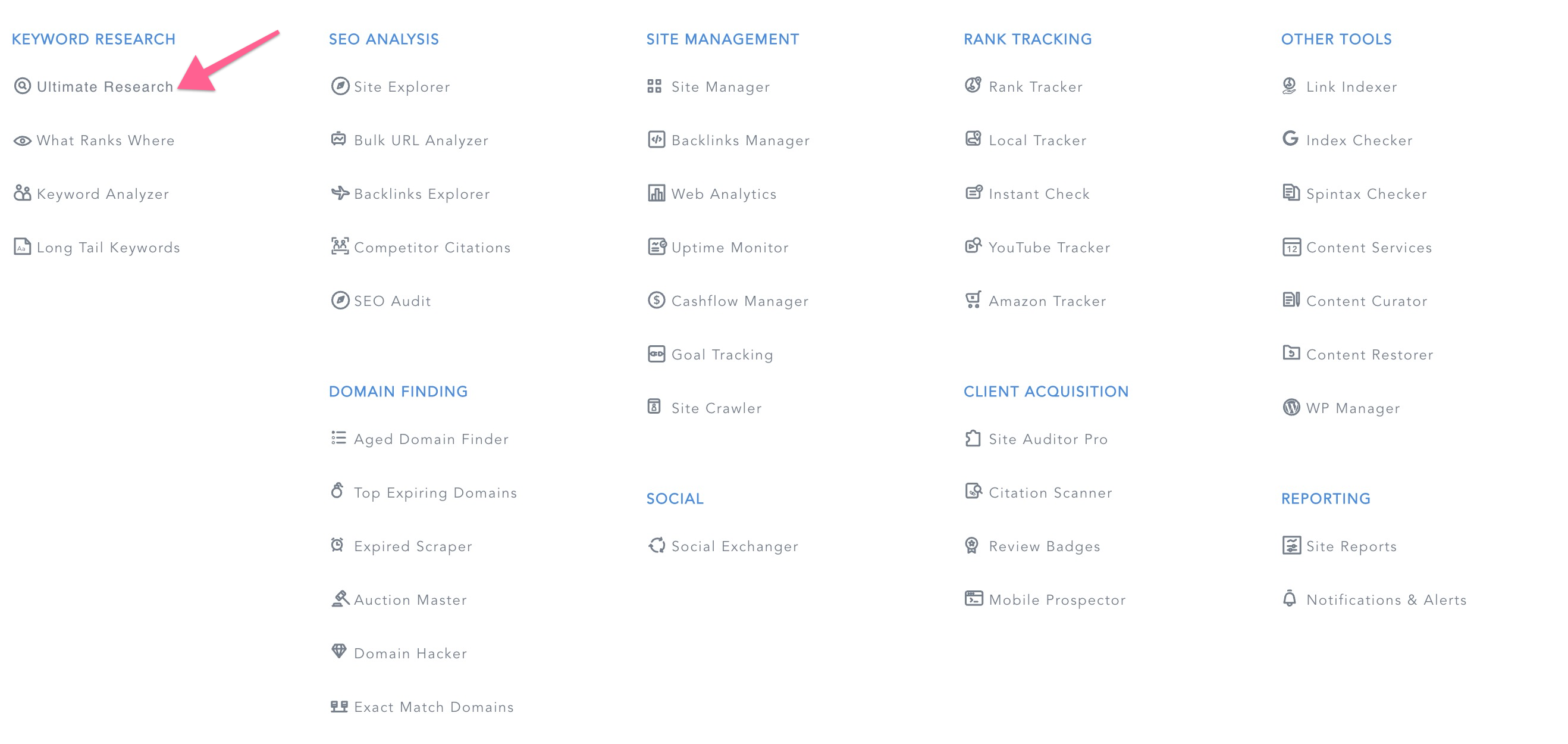
This will show you the list of previous searches. In order to search for a new keyword, click the blue “+” button at the top right.
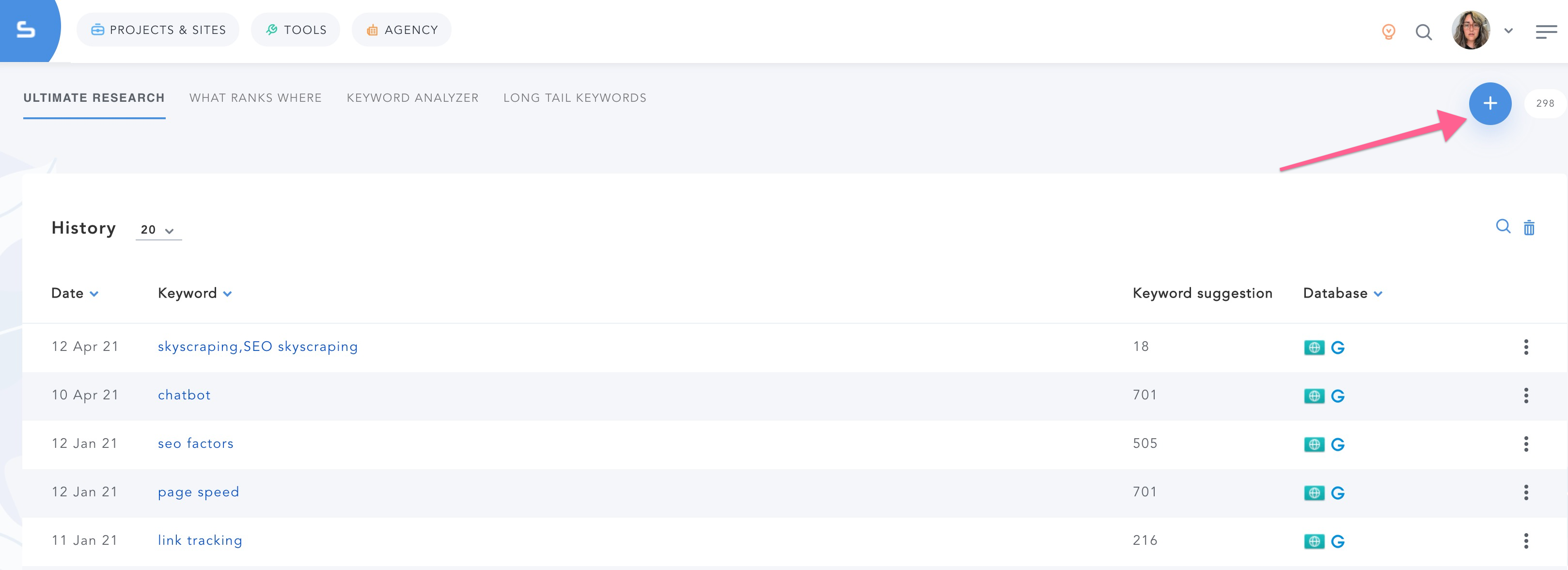
We recommend using a keyword that’s highly specific to your niche. In this case, we went with “skyscraping”, for obvious reasons.
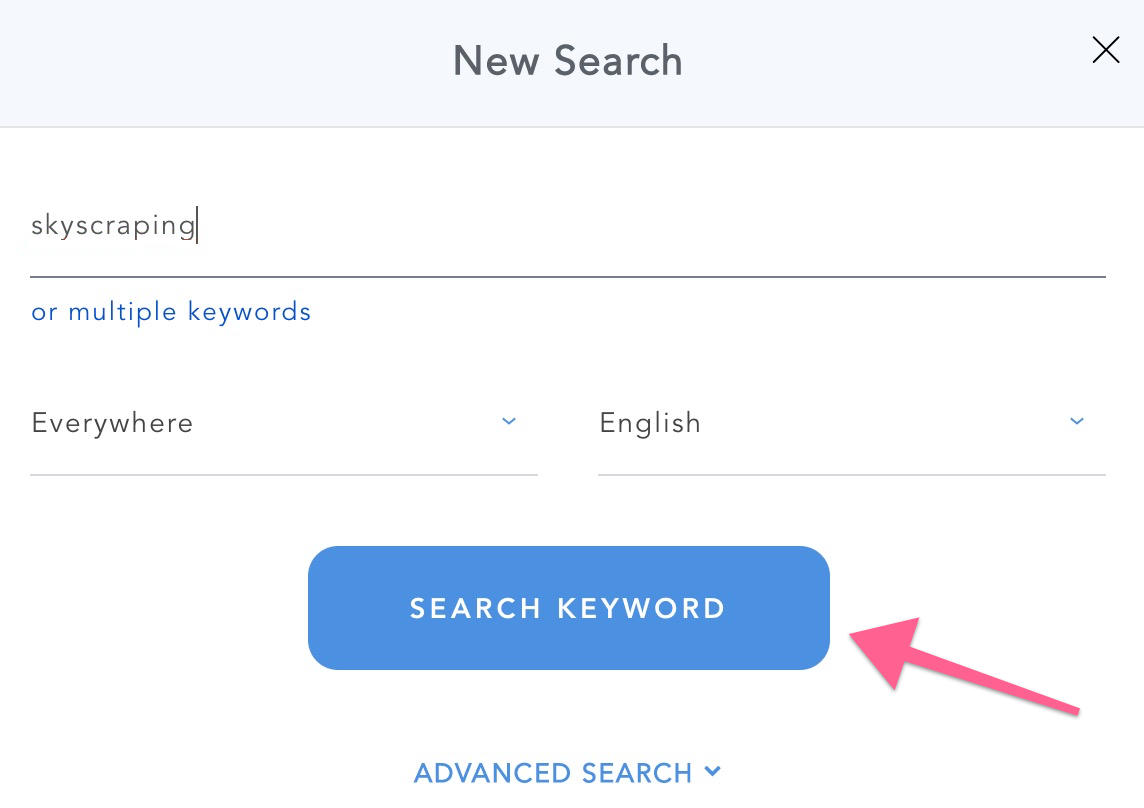
To start your search, click the big Search Keyword button. On the results page, you’ll see similar keywords. In order to find article ideas for each keyword, click on the three-dot button at the right of each result.

Then, select Launch Keyword Analyzer from the menu that appears.
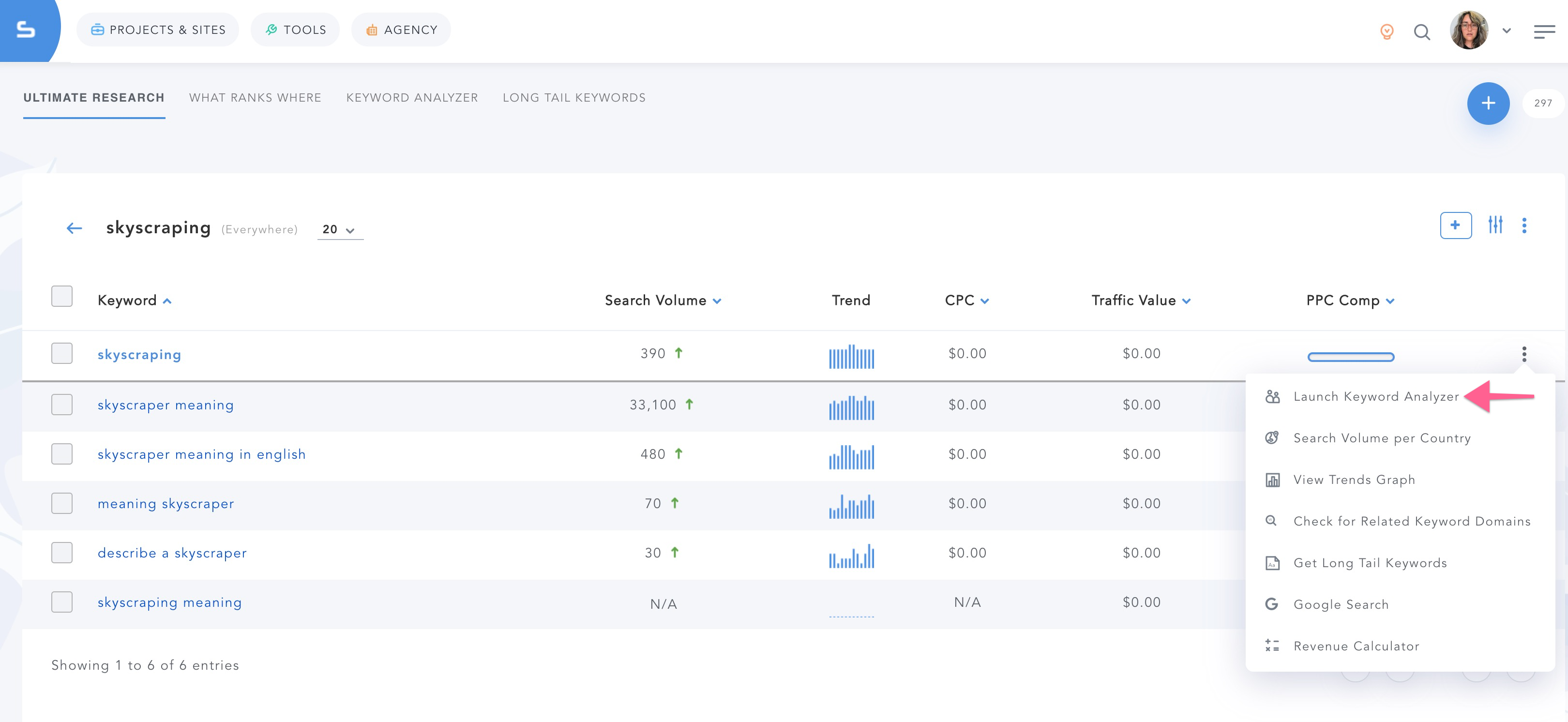
This option will open a menu with a few important metrics for the keyword.

Scroll down and you’ll see a few websites that rank for that keyword:

Check each of these websites on the list for the usual metrics: Alexa Rank, Moz Rank, Domain Authority, Page Authority… Once you have taken a look at the articles, we recommend checking the backlink profile for each page. To find these backlinks, click on Backlink Explorer on the Tools menu, under SEO Analysis.
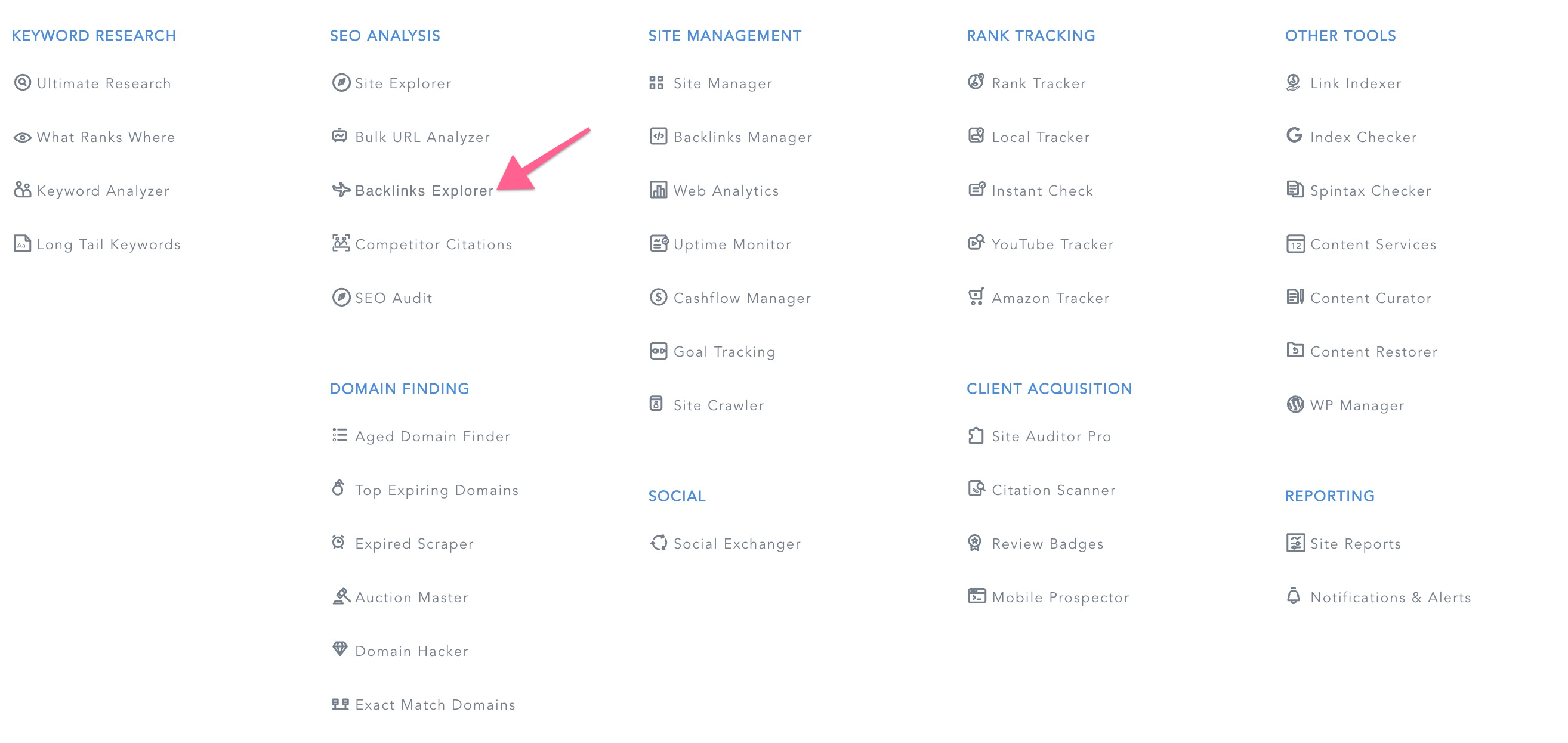
Once you open that tool, you’ll see a list of previous searches. To start a new backlink profile check, simply click on the blue “+” button at the top right.

On the next window, you get to choose to see the backlinks for a single site or a competitor analysis using Backlink Gaps. Since we already have a single URL to use (the one from the original article), we’ll pick the first option: Single Site.
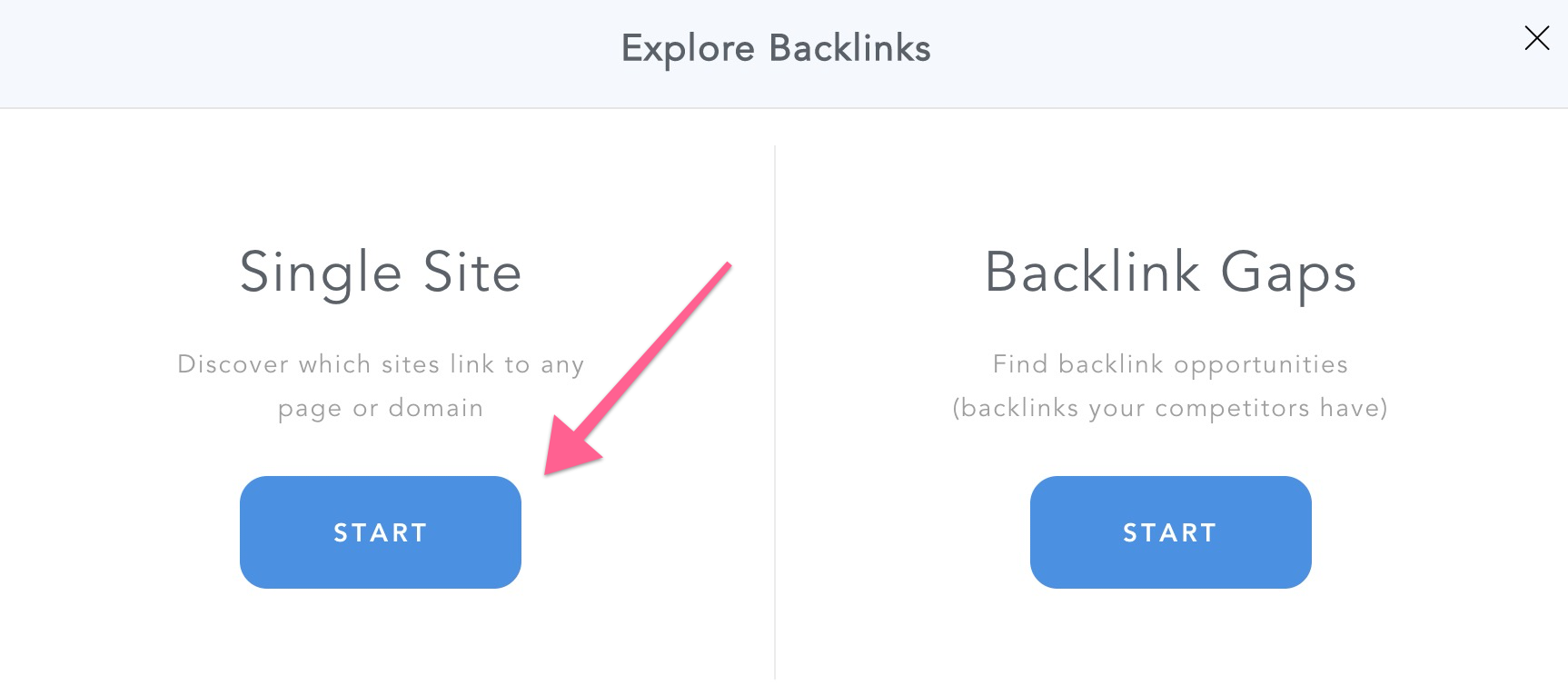
Then, paste the URL you want to check:
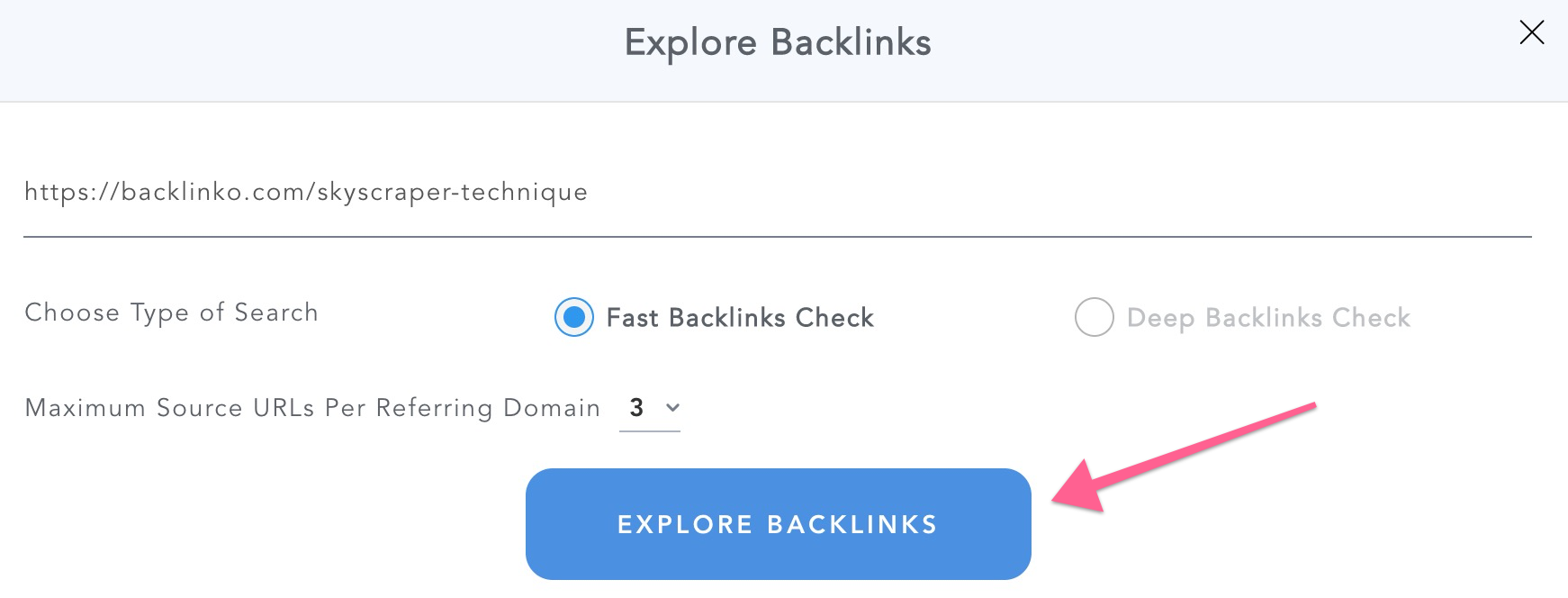
Now, click on the Explore Backlinks button.
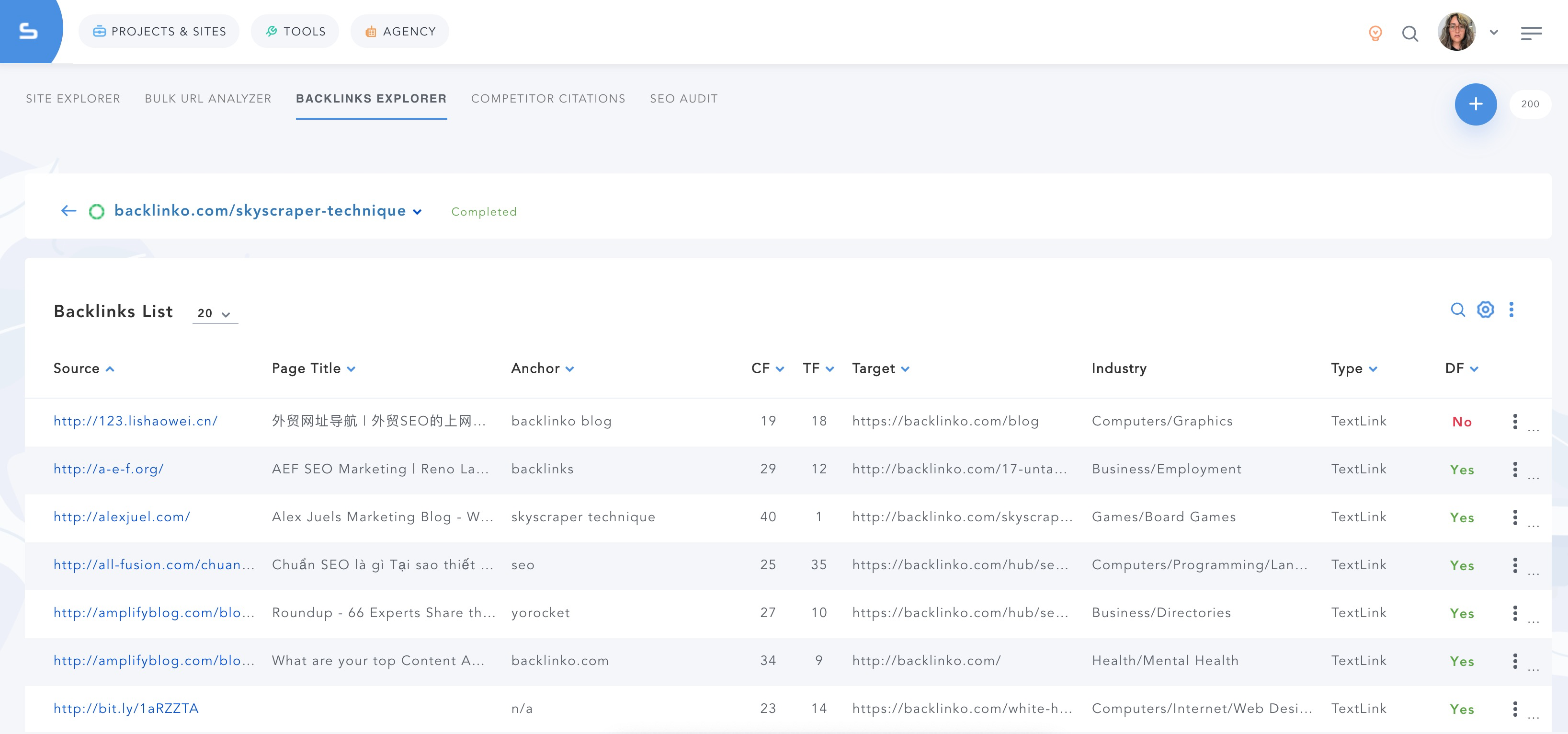
The result will be a list of the backlinks for that article, and you can filter them by Citation Flow, Trust Flow, or the anchor text. It takes a while to analyze all the results, but you can export them using the option Export To .CSV by clicking on the three-dot button on the top of the list:
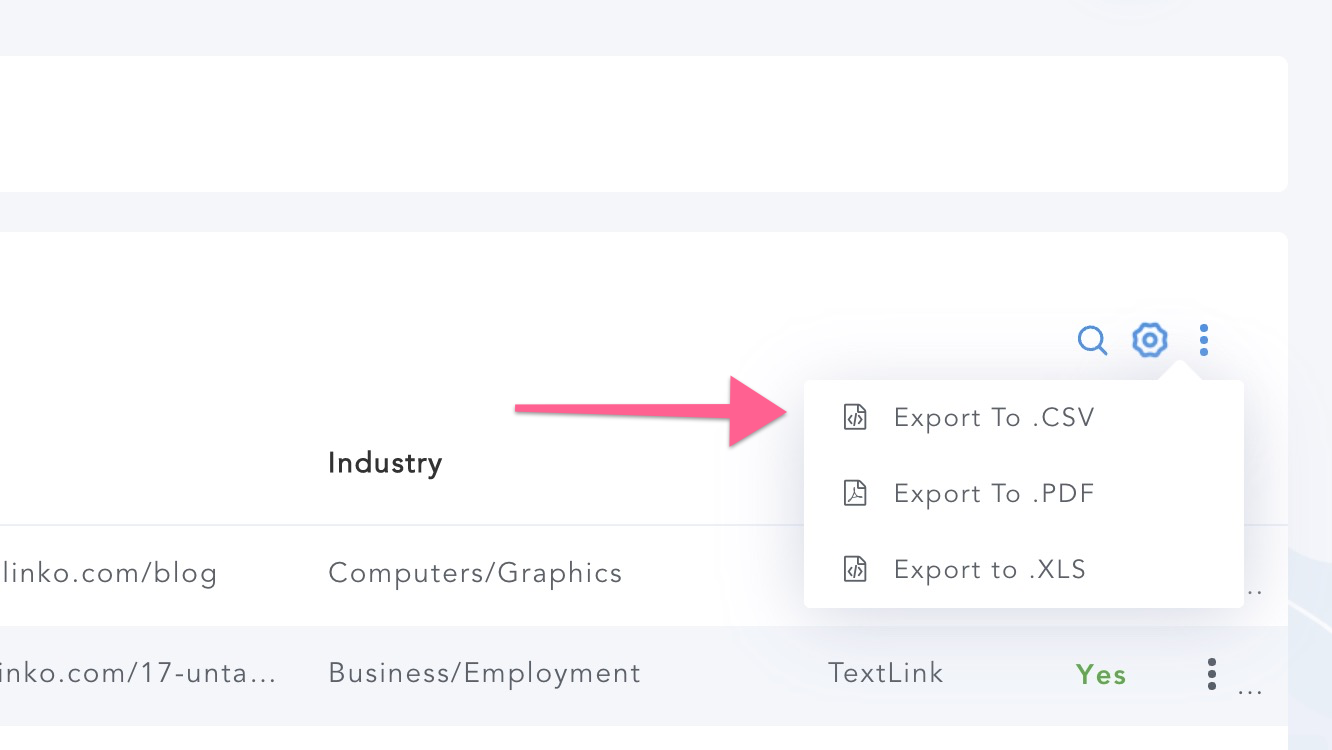
Exporting the file to .CSV will enable you to segment the links according to the values of each field, making it easier to spot the backlinks you should go after. 📈
2. Create New Content
It’s not always easy to create new content, especially if you are competing for the first spot on SERPs. There are many ways of creating new material for a well-known subject, but they all fall within four categories:
- Length. If the average article is 1000 words or less, write 1200 words. If it lists 20 items, list 50, and so on.
- Depth. If there is a way to go into more detail, go for it.
- Design. If the text can be summed up in an infographic for easier interpretation, why not?
- Freshness. If the article has been written a while ago and is no longer up to date, create fresh content by updating the information that was available before.
This does not mean that by following the four categories, the article is going to land you the first spot on Google SERPs. It also does not imply that you have to do all this in order to create your masterpiece. You should put a lot of effort into every article you create, but remember that content for SEO is both a science and an art. 🧪🎨
30-day free trial, 30-day money back guarantee
Another tip is to check your other competitors to get a feel of what is working or not. Don’t just use one article as a source; check out what is out there and match your search intent and subject with the different content available.
This also works for your old blog content; a way to repurpose old material is to join two different articles that are incomplete by themselves but fit together perfectly. This is a great way to give your old content a new life.

3. Reach Out For Possible Backlinks
This is the bit that can make or break your skyscraper technique for SEO.
A great part of your time spent on this technique is selecting the ideal websites to request backlinks from. First and foremost, go after the authority links from the article you selected in the first step.
Authority links have a higher Citation Flow and Trust Flow (metrics from Majestic, but you can check them using SERPed as we mentioned above). Of course, some backlinks seem suspicious immediately, especially if they’re in a different language from the original source content and the anchor text reads weird.
Once you have your list of the ideal websites to ask for backlinks, you need to contact the webmasters. For these contacts, the right message is essential. ✉️
When crafting your email messages to send to website owners, make sure you personalize each message accordingly. Don’t just create a template and replace the name of the person you’re contacting.
We recommend taking a look at your backlink prospects’ profiles on LinkedIn, check other articles they published that are related to your subject… Make sure you know enough about the person you are getting in touch with.
The biggest mistake when contacting website owners is approaching everyone with the same email content. Every webmaster has different goals and points of view, and you need to respect that – this is the best thing you can do to make sure your outreach efforts are successful.
Wrapping Up
There’s a lot more to be said about the skyscraper technique, but this is only a short guide that will help you start using skyscraping for SEO.
It’s not easy to reach the top when it comes to SERPs, but it is possible. Nonetheless, it’s not something that happens overnight, so we advise you to be patient and keep on improving your content.
We’ll soon have another article that will help you improve your old blog posts, which will also help you climb up the rankings.
If you have any questions, or would like to add something to this guide, feel free to use the comment section below or reach out to us on Facebook, Twitter or LinkedIn.
30-day free trial, 30-day money back guarantee


